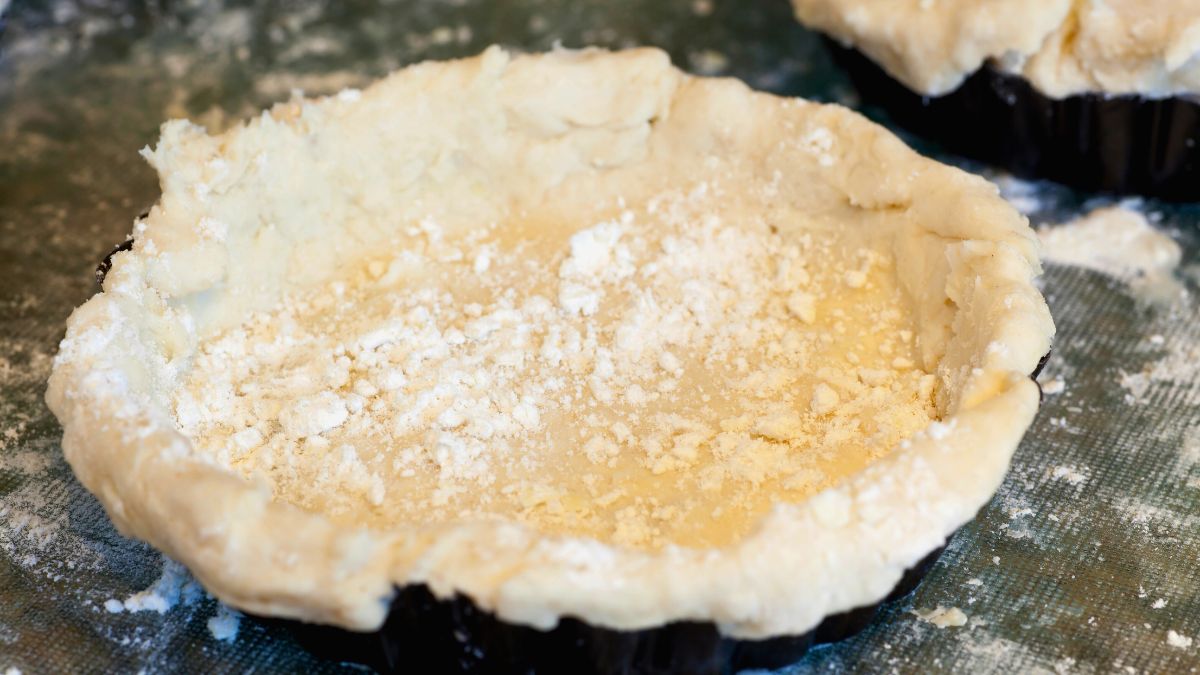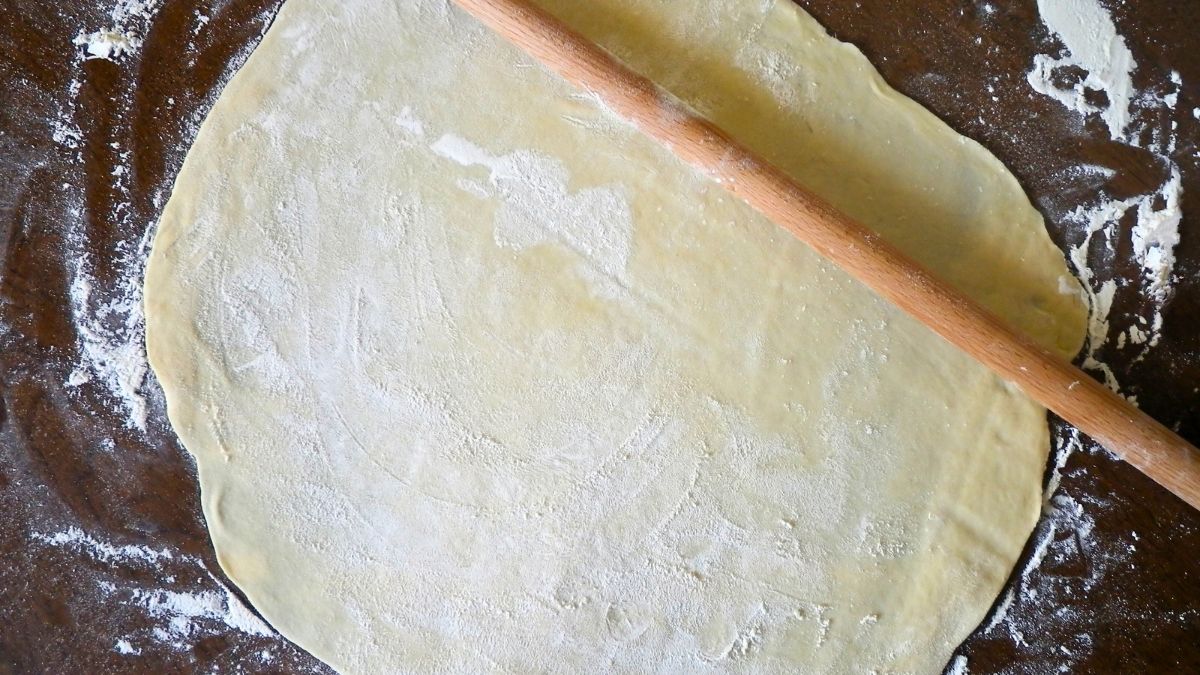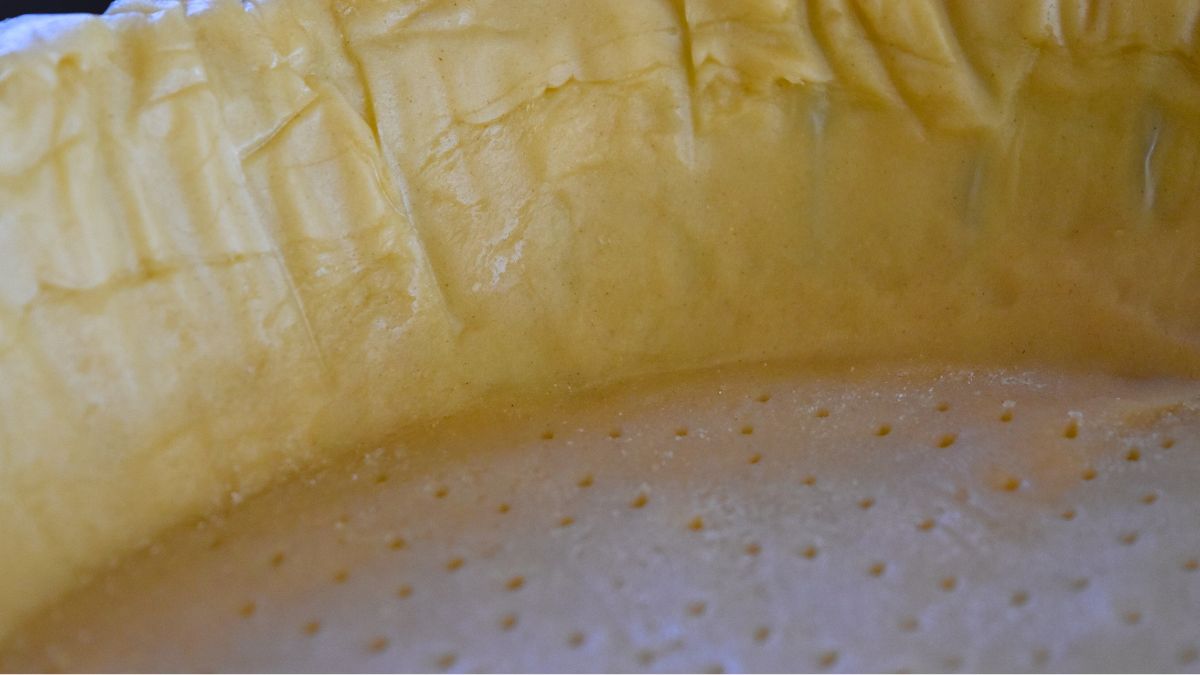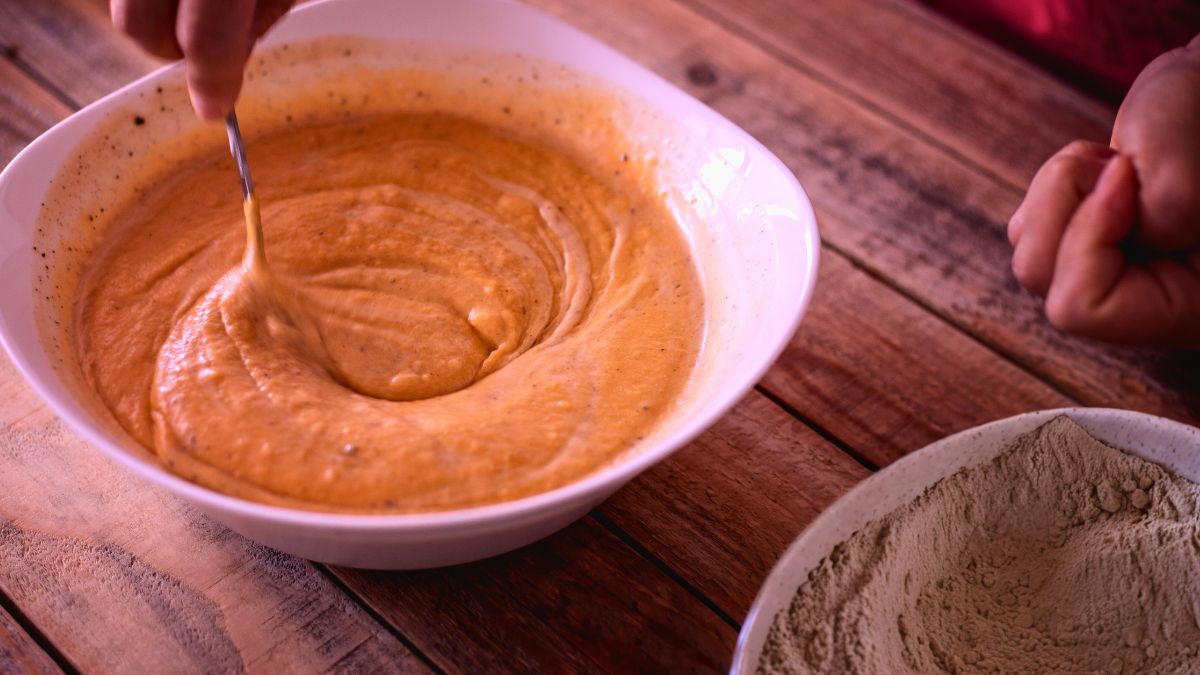What if There’s Too Much Shortening in Pie Crust?

Have you ever been baking a pie and accidentally added too much shortening to the crust? I have, more times than I’d like to admit. A flaky pie crust requires a delicate balance of ingredients, and it’s easy to get carried away with the shortening. But don’t worry, your pie is salvageable! If you want to find out how, read on to see what to do if there’s too much shortening in pie crust!
Reducing the amount of filling in the pie can prevent the crust from getting soggy if there is too much shortening in the crust. You can also dock the dough by piercing it all over with a fork. This allows steam to escape so your crust doesn’t end up soggy. Another way is to chill the dough before rolling it out.
Over the years, I’ve learned a few tricks to fix a crust with too much shortening. In this article, I’ll share several solutions to save your pie and still achieve a perfect flaky crust. Your pie may end up even better than if you hadn’t made the mistake in the first place.
How to Fix Too Much Shortening in Pie Crust?
There are many easy ways to salvage your pie crust if you’ve accidentally gone overboard with the shortening. As you will see, it’s often an easy fix, and starting over from scratch is unnecessary. A little extra flour, chilling the dough, or blind baking can go a long way. And if all else fails, just call it a delicious crumble-top pie instead!
Baking should be fun, not stressful. I hope these tips help ease the panic of pie-making and give you the confidence to return to the kitchen!
Chill and Re-Roll Before Baking for a Flakier Crust

Chill the dough before rolling it out. Letting the dough rest in the refrigerator for at least 30 minutes will allow the flour to absorb some of the excess grease. This allows the shortening to firm up, making the dough easier to handle. It may also prevent some shortening from leaking out during baking.
Once chilled, I roll out the dough on a lightly floured surface to about 1/8 of an inch thick. This helps create flaky layers in the crust by spreading out the excess shortening. For the best results, I chill the dough again for 15 minutes before placing it in my pie pan. This final chill sets the dough to keep its shape better during baking.
To avoid over-softening the dough with too much shortening in the first place, I make sure my ingredients are well-chilled before mixing and that I don’t overmix the dough. I’ve found that using cold butter, lard, or shortening and chilling the flour leads to a flakier crust. Mixing the dough just until it comes together, being careful not to overmix, prevents the fats from softening too much.
Reduce the Shortening to Flour Ratio
When I accidentally add too much shortening to my pie crust, I don’t panic. I simply add a bit more flour, 1-2 tablespoons at a time, until the dough comes together and isn’t greasy. Mix in the extra flour with your fingers, being careful not to overmix. Add flour until the dough reaches the consistency of coarse crumbs and clumps together when squeezed.
Adding a bit more flour is probably the easiest solution. Roll and bake as directed. The additional flour will soak up some of the excess grease and help the crust hold together better.
Blind Bake the Crust

Baking the crust before adding the filling helps evaporate excess grease and ensures a crispier base. Prick the crust all over with a fork, then weigh it down with pie weights or dried beans and bake at 350 °F for 10-15 minutes. Remove the weights and continue baking until golden brown, about 10 more minutes. Let cool completely before filling.
You can also try brushing off any excess shortening from the crust with a pastry brush before baking. Make a few slits in the bottom to allow steam to escape. Both methods will help produce a flakier crust.
If the crust still seems greasy after blind baking, don’t fret. You can salvage it by brushing the crust with an egg wash or milk and sprinkling with sugar, crumbs, or oats before baking your pie. The coating will absorb extra grease and add crunch.
Try with Some Ice Water and Patch Holes Before Baking
First, add some ice water, 1 tablespoon at a time. Gently mix it into the dough with your fingers until it comes together. The water will help balance the fat and create a dough you can roll out.
Alternatively, you can divide the dough in half and add water and flour to only half, then combine the two halves. This prevents over-mixing the dough. If the dough is still too greasy, you can roll it out between two sheets of parchment or wax paper. The paper will absorb some fat, and you can peel it away once you’ve rolled out the dough to the correct size.
Then, you can patch any holes or tears in the dough before baking. Gently press dough scraps over any holes or cracks, and reshape the crust with your fingers to create an even thickness. The shortening will melt as it bakes, so patching helps prevent a lumpy or uneven crust.
Adjust the Filling

To avoid a mushy crust, I add a bit more flour or cornstarch to thicken up runny fillings like fruit pie fillings. You can also reduce the amount of liquid in the filling slightly.
For small cracks or holes in the bottom crust, sprinkle some bread or cracker crumbs over the crust before adding the filling. The crumbs will soak up excess moisture and fill in gaps. Pat the crumbs down gently with your fingers or a spatula to adhere them.
You can forgo the top crust and make a crumb topping as a last resort. A topping of flour, sugar, butter, and spices sprinkled over the filling will hide any imperfections in the bottom crust. The crumbs will also absorb excess shortening as they render out during baking.
What Happens if You Bake a Pie Crust with Too Much Shortening?
First, the crust won’t hold its shape well and will be crumbly instead of flaky.
Too much grease means the dough won’t form those light, separable layers. To fix this, I add a bit more flour, usually 1-2 tablespoons at a time until the dough comes together and rolls out easily without cracking.
The crust also often ends up soggy and greasy.
Excess shortening melts in the oven, releasing oil that saturates the crust. To fix this, I chill the rolled-out dough for at least 30 minutes before baking. This hardens the shortening and prevents it from melting into the crust. I also make sure to vent the crust by cutting a few slits in the top and bottom.
Finally, the crust usually ends up with an unpleasant greasy aftertaste.
Too much shortening overwhelms the flavor of butter and any other ingredients. I add some sugar, lemon or orange zest, vanilla, or spices like cinnamon or nutmeg to improve the taste. I also brush the baked crust with a flavored glaze, syrup, or spice-infused cream or milk before adding the filling.
Have you tried any of these solutions? I would love to read about your ex-pie-rience in the comments below!
